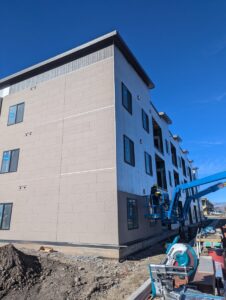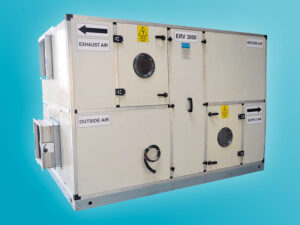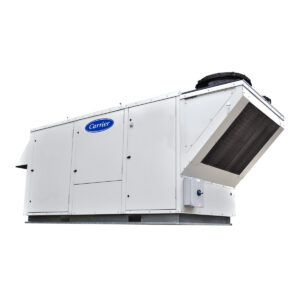Here again to post on yet another hot topic. ok – sorry, I just can’t help myself. The topic of today’s knowledge blog is geothermal heating and cooling. There is actually nothing new about this idea, but it is gaining popularity in these days of climate concerns and rising energy prices. A lot of clients ask about it and few are very sure of what it’s all about. How effective is it and does it make sense for their project.
Well, let’s start with some basics. First, heat is simply a form of energy, just like electricity. It can move, be stored and be converted to other forms of energy. Heat is always on the move and it naturally likes to move from hot things to cold things until both things are the same temperature. However, we have the ability to move heat. That’s right, we can move heat just like we move electricity.
Most of you may be familiar with a contraption called an air conditioner. This is a machine that literally sucks the heat energy from one place and spits it out in another. The “cool” thing (sorry) about air conditioners is that they can move heat against its natural direction of flow. I won’t get into all of the scintillating details of how this works, but trust me on this, it does work, and quite well. Take note here, it’s the heat that’s actually moving and when heat leaves the building, you get…you guessed it, cool.
Even cooler, this contraption can also be run in reverse, so you can move heat in either direction. These are the basic fundamentals of how most motel rooms are cooled AND heated. The very same device can be controlled forward for A/C and in reverse for heat. The formal name for this device is aptly named: a heat pump.
The heat pump is a surprisingly efficient machine for moving heat, however, there are some challenges to optimizing the energy it consumes in order to work its magic. Most importantly, the temperature of the surroundings. If you’re trying to move heat into a place that is already extremely hot, the heat pump will have a very hard time trying to shed that excess heat on the receiving side. Similarly, if it has to pull heat from an extremely cold source, this doesn’t work so well either as there’s simply not much heat energy available. The examples here are moving heat from inside a building to the outside when the air temperature is 110 degrees or trying to heat your home with a heat pump when the outside air temperature is -10 degrees. Both scenarios are very difficult for a heat pump to work very efficiently.
OK, so now we know about heat pumps and how they work. Let’s get to how geothermal fits into all of this. Most people conjure images of old faithful and bubbling hot springs or even smoldering volcanoes when they hear the word geothermal. While there are some instances of people harnessing the energy from these natural wonders, this is not what most geothermal systems are about. To put it simply, geothermal systems allow the heat pump to exchange heat with the underground temperature instead of the outside air temperature.
Why would we do that? Well, unless you live in a place like Yellowstone, the ground temperature below frost depth pretty much everywhere in North America runs at a constant temperature of 56 degrees Fahrenheit (and in Yellowstone, it could be considerably more). So the basic idea is that if you can exchange heat with the 56-degree ground, the heat pump has a much easier time moving that heat in all four seasons because it doesn’t have so much temperature to overcome in either direction. The results: energy efficiency.
So why doesn’t everyone have a geothermal system in their homes? Simple, like most ingenious ideas, they can be rather expensive if the site is not conducive to it. Geothermal loops require a large system of underground pipes to exchange the heat effectively with the ground. Some homes don’t have the yard space for this and other homes here in the Rocky Mountains are on such solid rock, that you have to drill to get the systems into the ground and this can be very costly. However, it can be done just about anywhere and if you have a yard that is geo-friendly, it can be very cost-effective over the life cycle of the building. And the nice thing about the pipes in the yard: no moving parts to go haywire. All of the equipment for the pump sits in your mechanical room and the geothermal loop can support a forced-air or radiant HVAC system, just like any other heat exchange method.
So the recommendation? Definitely look into it. Any good geothermal contractor can come out and do a site assessment and tell you what your options are. And most can also give you a cost breakdown of the system over time. Exchanging heat with a constant temperature sink/source is just plain smart engineering. As long as you’ve got the yard, it is not only going to save you money on your heating and cooling, but you will also have pride in knowing that you are doing the responsible thing for the lifetime of your home.










